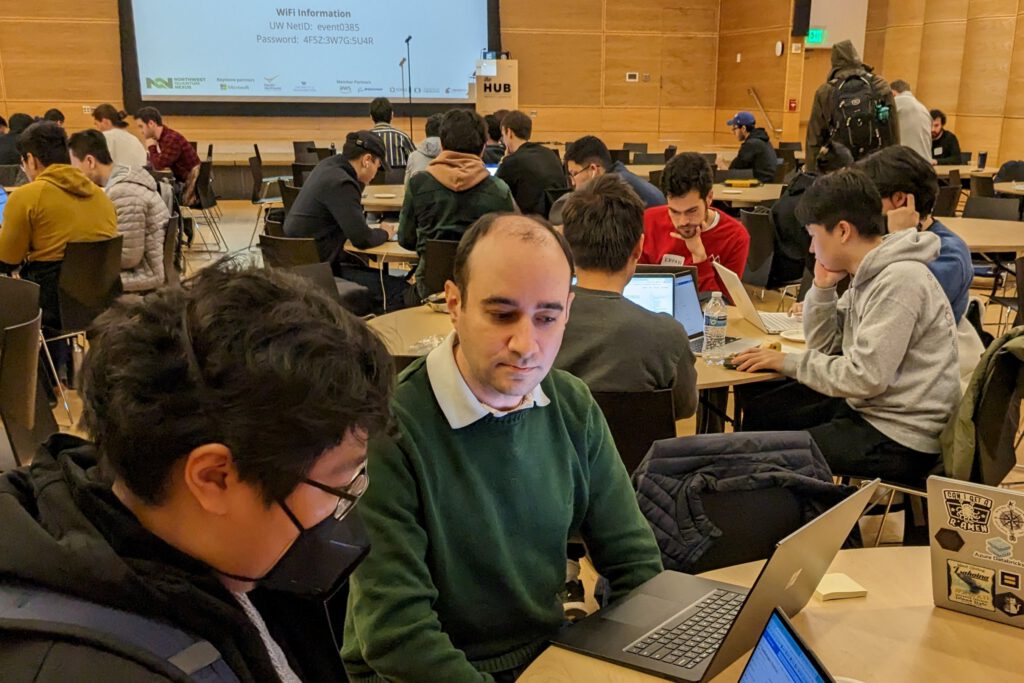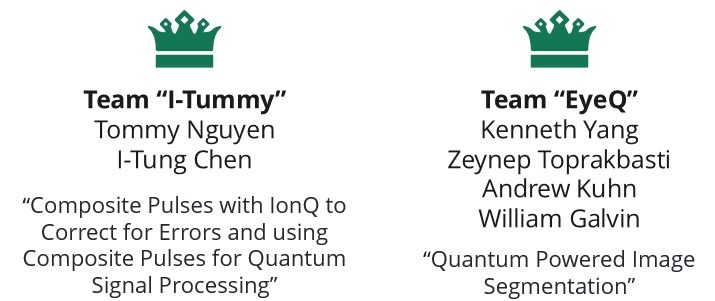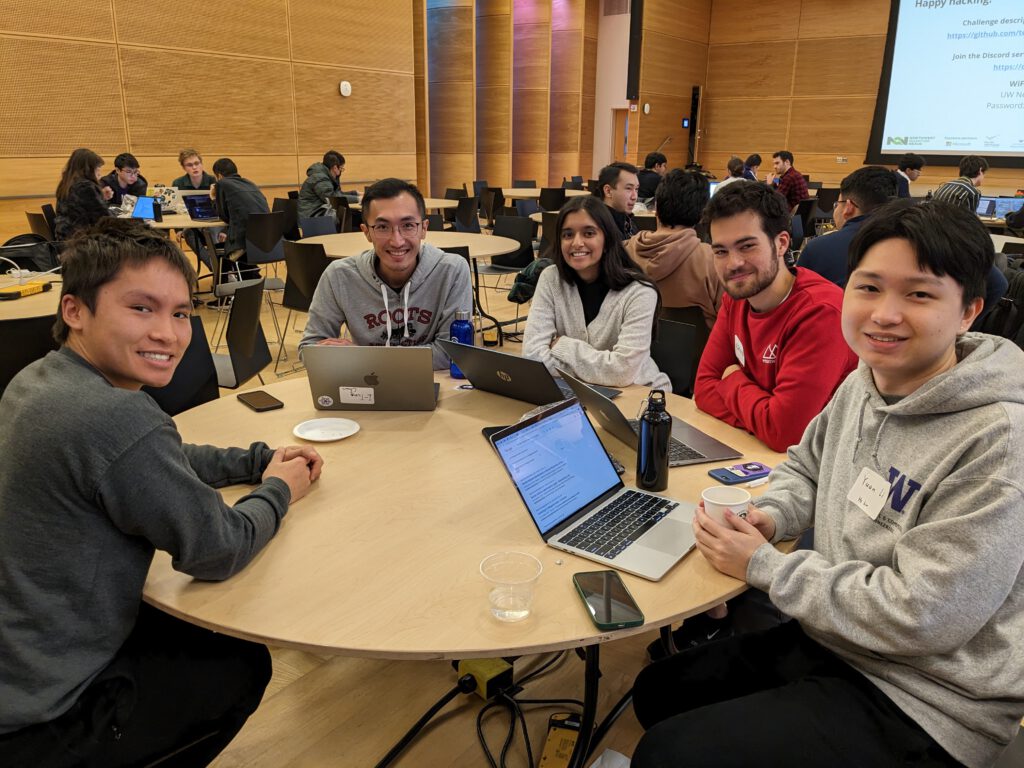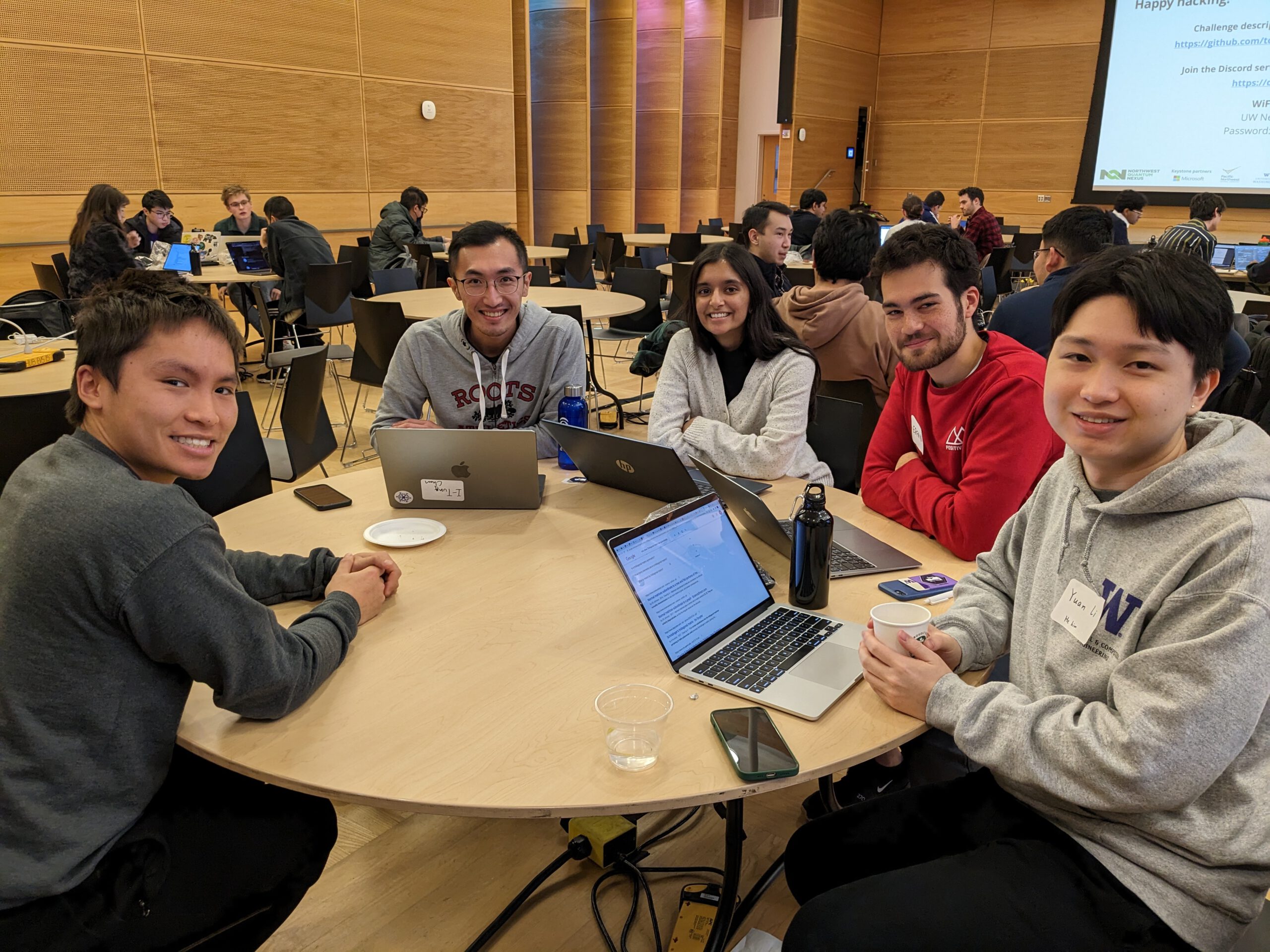University of Washington Winners at NQN Hackathon!
On a sunny afternoon on Friday, January 20th, the University of Washington was the host of the NQN Winter Hackathon- a quantum programming challenge powered by Microsoft Azure Quantum and IonQ. The Hackathon brought together nearly 80 in-person attendees and even more virtual participants- mostly students from fifteen universities across the PNW, including Washington State University, the University of Oregon, and of course, the University of Washington.

Of over 150 total registrants, three teams were awarded and announced the winners during the closing session of the NQN Summit on Tuesday, January 24th. QuantumX is proud to announce that two of the three teams were from the University of Washington!

QuantumX was able to conduct a Q&A with the two UW winning teams about their experiences with the NQN Hackathon; all the trials, tribulations, and technical solutions that allowed them to win.
Q: What was the NQN Hackathon challenge?
Team EyeQ: The hackathon was a fast-paced event lasting 48 hours, during which participants utilized Microsoft Azure’s Quantum computing service and IONQ quantum computers to come up with solutions to problems of their own choosing and present them.
Q: What was the first challenge you encountered when you began the Hackathon?
Team I-Tummy: The first challenge that we encountered is definitely trying to find an interesting topic that we want to explore using quantum computers. Tommy and I initially have different ideas, and…we only have a really short time to discuss in-person about what we want to do. I think we spent the entire afternoon deciding which project to work on.
Team EyeQ: While everyone on our team has plenty of experience in programming, none of us has ever tried quantum computing before! We spent the majority of our time learning how to write code for quantum computers and also understanding the kinds of problems we could solve.
Q: What creative solution did your team come up with to solve the challenge you were given?
Team I-Tummy: This project comes from the class CHEM560 that was offered last year (Spring 22). In CHEM560, we were fortunate to have Prof. Isaac Chuang to talk about his work in quantum control and quantum signal processing as a guest lecturer. His idea of using composite pulses sequence to combat the systematic errors in quantum hardware heavily inspired our idea for this hackathon. Basically, in modern quantum hardwares, there could be many sources that could cause the errors in the output, but one specific error is caused by the imperfection of the control signal that is sent into the quantum hardware to control the qubits. And composite pulse sequence can correct this type of errors in the system.
Team EyeQ: We decided to tackle image segmentation, which is the process of splitting an image into two components based on its contents (for example, separating the foreground of an image from the background). One trick we discovered was that images could be represented as a weighted graph, where pixels were represented by vertices and edge weights represented how “similar” two pixels were
Q: Does your solution to the Hackathon have any real-world applications you can tell us about?
Team I-Tummy: We successfully constructed the broad-band(BB) and the narrow-band(NB) signal profile using the composite pulse sequences at the end. BB essentially increases the tolerance of the imperfect signal, and NB can serve as a filter to filter out the imperfect incoming signal. But the time for the hackathon was only two days so we don’t actually have the time to run BB and NB in an actual quantum algorithm. This could be a really nice future work though!
Team EyeQ: One application we thought about was for research in climate change. It is possible to observe lakes shrinking through satellite images over time, and with an image segmentation algorithm, one could easily quantify the amount at which a lake’s size has changed over time from image to image. Image segmentation is also useful for self-driving cars which need to quickly distinguish different objects in a scene and classify them.
Q: What was your favorite part of the Hackathon?
Team I-Tummy: It was very interesting to see IonQ’s quantum computer in action, and interesting to see how the IonQ’s engineer trying to troubleshoot some of the technical problems we had during the Hackathon. I think talking to people and meeting new people in this field during the Hackthon is my favorite part.
Q: Is there anything else you want to share about your team’s experience at the NQN Hackathon?
Team I-Tummy: Quantum computing is such an emerging field, and I’m really excited about my future journey on this path!
Team EyeQ: Hackathons are an immensely fun way to learn new skills quickly and also get connected with industry professionals! We look forward to participating in more NQN hackathons in the future and encourage everyone to participate as well!
Congratulations to UW winning teams EyeQ and I-Tommy! We look forward to more UW turnout at future events and workshops like this, so check out the QuantumX website for more information on upcoming opportunities!


